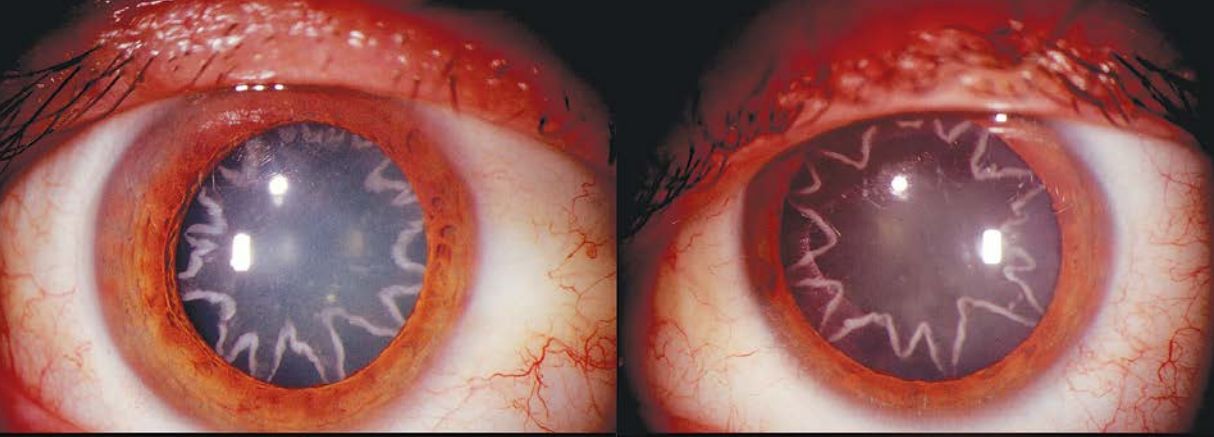Electrical Burn Causes Man's Star-Shaped Cataract

A 42-year old electrician in California developed star-shaped cataracts in his eyes after a serious work-related accident caused electricity to run through his body, according to a new report of the case.
The man's left shoulder came into contact with 14,000 volts of electricity, and an electric current passed through his entire body, including the optic nerve — the nerve that connects the back of the eye to the brain.
"The optic nerve is similar to any wire that conducts electricity," said Dr. Bobby Korn, an associate professor of clinical ophthalmology at the University of California, San Diego, who treated the patient. "In this case, the extreme current and voltage that passed through this important natural wire caused damage to the optic nerve itself," Korn said. [7 Amazing Images in Medicine]
Four weeks after the accident, Korn evaluated the patient, who was experiencing vision problems. An examination showed the man had "striking cataracts in both of his eyes," that were star-shaped, Korn said. A cataract is a clouding of the lens in the eye.
The reason cataracts sometimes take on a star shape is not fully understood, Korn said. In animal studies, damage to the eye's lens from electricity first appears as small bubbles called vacuoles on the outside of the lens. These bubbles then coalesce to form a star-shaped cataract, Korn said.
Four months after the accident, the man had surgery to remove the cataracts and implant a new lens, and his vision improved slightly after the operation, Korn said. But the damage to his optic nerve still limited the man's sight, Korn said.
Korn explained that the eye is like a camera: if the lens is damaged, it can be replaced with a new one, but if the "film" — in this case, the optic nerve and retina — is damaged, "then you'll never get a good picture," Korn said.
Get the world’s most fascinating discoveries delivered straight to your inbox.
Now, 10 years later, the man still has poor vision in both of his eyes, Korn said. But he is able to commute on public transportation and take classes at a community college using assistance, Korn said.
The man's case is reported in the Jan. 23 issue of the New England Journal of Medicine.
Follow Rachael Rettner @RachaelRettner. Follow LiveScience @livescience, Facebook & Google+. Original article on LiveScience.

Rachael is a Live Science contributor, and was a former channel editor and senior writer for Live Science between 2010 and 2022. She has a master's degree in journalism from New York University's Science, Health and Environmental Reporting Program. She also holds a B.S. in molecular biology and an M.S. in biology from the University of California, San Diego. Her work has appeared in Scienceline, The Washington Post and Scientific American.


